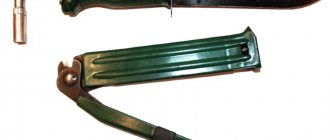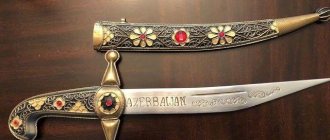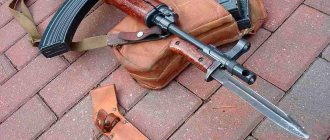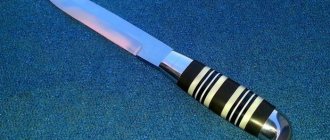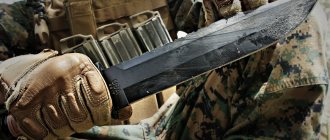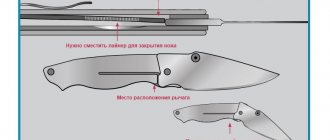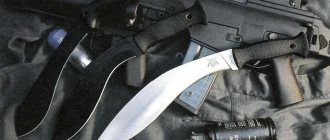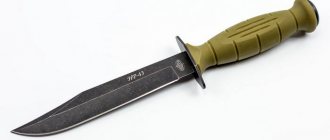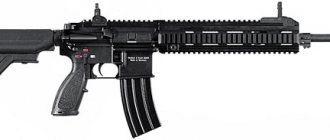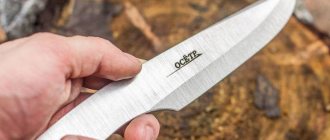Germany during World War II
The period in history since World War II designates Germany as the "German Reich" Deutsches Reich until 1943 and then the "Greater German Reich" Großdeutsches Reich. Russian historians use terms such as “Hitler”, “Nazi”, “fascist” and “Third Reich” to refer to Germany. The Greater German Reich ceased to exist after the defeat in World War II, and some security forces and the National Socialist German Workers' Party were recognized as criminal organizations.
On September 1, 1939, the German Army invaded Poland. During the period from 39 to 41, German troops defeated Poland, Denmark, Luxenburg, the Netherlands, France, Greece, Yugoslavia, Norway and Belgium. On June 22, 1941, the invasion and seizure of part of the territory of the Soviet Union took place.
A regime of intimidation took place in the occupied territories. The persecution and extermination of Jews began, and in some areas the complete extermination of the local non-Jewish population began in order to suppress partisan movements.
The unconditional act of surrender was signed on May 8, 1945 in Reims. May 9 was declared the day of cessation of hostilities, and on May 23 the government of the Third Reich was arrested in Flensburg.
According to the latest data, German losses during the Second World War amounted to 8 million 876 thousand people.
82. M7 Bayonet
82. M7 Bayonet
The American M7 bayonet was developed in 1964 for the M16 rifle. It became one of the last examples of bayonet knives, which were primarily a weapon, a means to defeat the enemy, and not a multi-purpose tool.
A whole series of American bayonet knives from the Second World War and post-war times, such as, for example, M4 (for the M1 carbine), M5 (for the M1 Garand rifle), M6 (for the M14 rifle) and the M7 described here, have one thing in common the progenitor is the M3 Trench Knife, a combat knife widely used by the American army since the early 1940s and produced by many companies, both in the USA and in other countries. All of the listed bayonet knives inherited the blade from the M3, differing in fact only in the handles and attachment points to the weapon.
An interesting fact is that the geometry of the M3 blade allows us to consider its ancestor as a knife made by order of the German Luftwaffe, which in turn is only one of the many variants of “trench” knives that appeared in the trenches of the First World War. Such borrowings are not uncommon in the weapons industry, because during war, efficiency rather than originality is paramount. And a successful model that has proven its effectiveness can live a long life, embodied in many copies and imitations, often on different sides of the front.
As mentioned above, the M7 is a fairly traditional design. At first glance, it is clear that his dagger blade, more than 170 mm long, is intended for piercing blows. This is facilitated by the symmetrical profile of the blade with one-and-a-half sharpening. There is a sharpened area on the butt, reaching almost half the length of the blade. This factor significantly increases the penetrating ability of the bayonet both in the user's hand and in the position attached to the rifle.
The developed guard has a ring in the upper part intended for fastening to the barrel of a weapon, and in its rear part there is a massive metal part with spring-loaded elements that fix the bayonet on a special lug in front of the rifle fore-end. In addition to performing its main function, the butt plate can be used to strike - both as an ersatz hammer and in hand-to-hand combat, since the successful arrangement of the latch parts does not allow them to be damaged by a blow.
The handle of the bayonet knife is assembled from two plastic halves, secured to the shank with two screws. These pads have a deep notch, which ensures reliable and comfortable holding of the bayonet in the hand.
The sheath used with the M7 bayonet is a standard design used with all bayonets in the series, including the M3 knife. This interchangeability is caused by the identity of the blades of these samples. The sheath is made of hard green plastic, equipped with a metal mouth and a flat spring that securely fixes the bayonet blade inside. There are two versions of such sheaths, differing in the suspension. The M8 scabbard has only a regular loop for attaching to any belt, while the M8A1 has a suspension equipped with a wire hook for a pistol belt, a standard item of US Army uniform. In recent years, a new type of sheath for the described bayonet knife has been adopted for supply to the US Army - M10. This scabbard is black in color, it is noticeably narrower than the M8, and is easily recognized by its widening at the mouth. The M10 scabbard suspension is made of cordura; it is similar in design to the M8A1 suspension and is also designed for mounting on a pistol belt.
20 years after the start of production, the M7 ceased to be the main bayonet of the US Army. It was replaced by the M9, which is described below. However, the M7 is still produced in several countries including the United States and supplies their armies. Based on the M7, the Ontario Knife Company created its modern version with a spindle-shaped handle and a blade made of 1095 carbon steel.
World War II Antiques. Germany
The Hitler period in German history left behind many striking and characteristic objects. Awards, for example, at this time became national (before the Nazis came to power, they were awarded by the state government and were of a purely territorial nature). A number of changes were made in accordance with the new attributes. Before the start of the war, Hitler personally presented all types of awards; later this right was vested in the military command.
During the period of the war of action, industry in the military sphere underwent crazy growth. A huge number of daggers, daggers, helmets, belts and buckles and other elements of uniforms and equipment have survived to this day and are presented in our catalog. Interior items and watches also have great collectible value and best convey the spirit of that time.
The exhibits are carefully preserved in excellent condition and prepared for further storage. You can purchase a piece of memory about one of the largest wars in history, which only becomes more valuable every year.
Bayonet for M16 rifle
Discussions about the feasibility and necessity of equipping assault rifles with bayonets have continued since the 1950s. Meanwhile, firearms continue to be supplied to the troops, complete with bladed weapons.
In 1964, the US Army adopted the famous M16 assault rifle (it itself and its numerous modifications are the second largest in the world after the Kalashnikov assault rifle) with a new M7 bayonet. It was the last model to use the blade of the M3 combat knife - asymmetrical, with double-sided sharpening (for more details, see the section “Bayonet-knives for Ml Garand and M14 rifles” in this chapter). The total length of the M7 bayonet was 300 mm, the length and width of the blade were 170 and 22 mm, respectively. It was in service for 20 years until it was replaced in 1984 by the more modern and technologically advanced M9 bayonet.
The M9 was slightly longer than its predecessor - 310 mm, the same applied to its blade: length - 180 mm, width - 32.7 mm. The latter was one-and-a-half bladed with a double-sided sharpening on the tip, as well as a saw on the butt (called a sling cutter). On early M9 models the dol is located on the right side. An oval hole is cut at the tip, which, when mated with the sheath (or rather, with a protrusion on it of the same shape), turns into a wire cutter.
M7 - the first among bayonets for the M16 automatic rifle
The handle with five annular and four vertical grooves has a rough surface. The steel pommel contains a double spring latch. The scabbard is plastic. In early and commercial samples, a blade sharpener was built into the scabbard, closed in the stowed position with an overhead canvas belt.
In 2002, the M9 was replaced by the OKC-3S bayonet. The shape of the blade resembles the Ka-Bar combat knife, which is considered one of the symbols of the US Marine Corps. The total length of the bayonet is 308 mm, the length and width of the blade are 180 and 36 mm, respectively. The weight of the knife with sheath is 0.57 kg. It is produced by the Ontario Knife Company.
M16 rifle with M7 bayonet
The blade is single-edged, without fullers, with serrated sharpening (with a wavy or sawtooth cutting edge), which allows you to penetrate body armor, and a matte finish. During one of the M9 demonstrations, a fighter punched through a punching bag, a ballistic vest and a sheet of aircraft-grade aluminum with one blow. The handle has five annular and four vertical grooves, and the steel pommel contains a double spring latch. The sheath is plastic, with a sharpener for the blade, as in the M9.
We have listed the main bayonets that are equipped with M16 automatic rifles. However, they produce many more of them. In particular, in African and Asian countries, the mounts for various bayonets used during the last two world wars are being remade and adapted to the M16. If you have a welding machine and a good welder, this kind of welding takes about 10 minutes.
Share link
Trench (trench) knives of the German army
home / more / history of weapons
Standard trench knife from the World War 1 period. Germany.
During the First World War, serial production of trench knives was established most quickly in Germany and Austria-Hungary.
They were supplied mainly to special units (assault, reconnaissance, sabotage, etc.) as a means of attack or defense, in trenches, trenches, premises, fortified structures, etc.
During this period, the Germans did not have a single statutory type of knife. Typically, German trench knives had a straight blade 12-14 cm long and a total length of 26-27 cm (the Austrians had 15-17 and 30-33 cm, respectively). They were produced mainly in Solingen and Bohemia - the historical centers of blade manufacturing in Germany and Austria-Hungary.
Standard trench knife from the World War 1 period. Austria-Hungary.
The reason for the lack of a single model of a statutory trench knife in Germany during the First World War is the fact that manufacturers were provided with general descriptions of similar models, which they tried to fit into without particularly rebuilding their own technological cycle.
These were simple single-plate models with one-sided or one-and-a-half sharpening. Less often the blade was made as a dagger.
The handle was a pair of wooden dies riveted to the shank, often with a series of longitudinal cuts applied to them for better retention.
Safety for the owner's hand when delivering a piercing blow was ensured by a cross (straight or slightly curved), made of a metal plate, or a one-sided limiter.
Trench knife with one-sided limiter. World War 1. Germany.
The product was equipped with a metal sheath with a swivel and a loop for wearing on a waist belt, as well as a safety strap made of canvas or leather.
In general, it’s cheap and cheerful: a massive auxiliary weapon for a soldier is what it should have been.
history of weaponsCombat daggersarticle
The largest number of similar knives, called Graben-Dolch - a trench dagger or Nahkampfmesser - a knife for close combat, during the First World War, was produced by the factories of Karl Friedrich Ern (CF Ern, Solingen), Hugo Keller (H. Koeller, Solingen) and Deutsche Maschinenfabrik (Demag, Duisburg).
Nahkampfmesser is a knife for close combat. Germany.
The Austrians, like the Germans, initially tried to solve the problem of the shortage of trench knives by massively reworking infantry cutlasses of the 19th century by shortening them and replacing the device - they mounted a straight or 8-shaped metal cross on the shank and riveted wooden plates.
Thus, the Austro-Hungarian cleaver model 1915 was obtained by remaking an infantry cleaver mod. 1853/62 and replacing the wooden scabbard with khaki metal ones.
Standard Austrian soldier's sapper cleaver model 1915.
But shortened cutlasses turned out to be ineffective in the trenches. Having looked at the German allies, the Austrians made the proper conclusions.
Austro-Hungarian manufacturers received an order to produce a trench knife with a dagger-type blade and one-and-a-half sharpening, which could easily pierce warm winter uniforms and equipment.
Structurally, the Austrian service trench knife consisted of a blade, a handle and a cross.
The handle consisted of overlay plates made of hardwood, connected with rivets.
Austrian trench knife with a dagger-type blade
Late Austro-Hungarian trench knives were more reminiscent of German trench or combat knives, although they were slightly larger in size: total length up to 350 mm, blade width up to 30 mm.
On the crosspieces of individual models, as well as on the bayonets, a trap was left in case of counteraction to the enemy’s melee weapons.
Despite the great popularity of such products among all the warring countries, perhaps only the Germans learned the proper lessons from the First World War.
German trench knife. First and Second World Wars.
At the beginning of the Second World War, not only popular civilian models were again used as trench knives, but also various trench knives preserved from the First World War.
history of weaponsBlades of the Third Reicharticle
Thus, a trench knife with a developed crosspiece found its way into the Luftwaffe in the second half of the 1930s, where it was used quite comprehensively - both as part of a paratrooper’s equipment, serving as a combat or universal knife, and as a rescue tool in case of leaving an unsuccessfully landed plane or glider. This model, in the old fashioned way, was distinguished by its impressive dimensions - the length of the blade reached 18 cm with a total length of the knife of up to 30 cm.
Standard knife of the Luftwaffe and field divisions, period of World War 2.
After the blitzkrieg in the East fizzled out in 1941, the Wehrmacht again remembered the old Graben-Dolch, which began to equip scouts and assault units.
The choice of this design was far from accidental. The German assault formations, which became famous during the First World War, became a symbol that inspired a new generation of German soldiers.
In many ways, it is precisely these sentiments that explain the “resurrection” of such crude examples as the Graben-Dolch and Nahkampfmesser as trench knives.
Graben-Dolch - trench dagger, used in World Wars I and II.
A large number of German Luftwaffe knives of the first service model of the German knife of the Second World War were nothing more than trench knives of the First World War, waiting in the wings in army warehouses.
During the Second World War, their production was resumed by companies from Solingen, including Anton Wingen production. Jr. and Paul Weyersberg & Co.
The trench knives remained the same in shape, only slightly decreased in size. The metal sheath has undergone changes: leather belt loops have been replaced by metal clip mounts with swivels, allowing knives to be worn not only on the belt, but also on elements of equipment and uniforms.
In 1942, the Wehrmacht began purchasing Infanteriemesser mod. 1942 - an inexpensive army knife in a metal sheath equipped with a clip: this model could either be attached to uniforms and equipment, or worn attached to the top of a boot.
Standard knife of the Wehrmacht since 1942. Model 42.
Its design was based on an inexpensive trench knife that had already proven itself well during the First World War, with a blade about 140 mm long and a small limiter or without one.
The total length of the knife rarely exceeded 270 mm. The design was simple: narrow slopes on the blade, plate mounting with three rivets, and a small steel plate as a limiter.
Another difference from its counterpart during the First World War was the shortened crosspiece, designed to minimize the risk of losing the knife in motion due to accidental snagging on other parts of the equipment.
Shortened crossguard on variants of World War II army knives.
The excessive asceticism of service models of army knives and their low functionality led to the interest of German military personnel in ordering small-scale models. Often this was simply the replacement of unsightly and short-lived wooden dies with bakelite or made of horn.
catalogCatalog of edged weaponsBayonets, knives, daggers (photo, technical characteristics)
Pumawerk models were loved for the functionality of their “butt triggers,” which provided the opportunity to use the knife as a full-fledged cutting tool, something that trench knives and bayonets have always lacked.
A militarized version of a multifunctional hunting knife. Puma. Germany. 2 World War II.
From a design point of view, these knives were much closer to traditional hunting “nickers” than to technologically advanced military sharpening blades. The problem of durability of the linings on Pumawerk was solved by replacing the wood with bakelite. Well, a true sophistication of those times were considered models whose handles contained additional folding objects that were so necessary on a hike: a can opener, an awl, a screwdriver, a corkscrew.
permitsRegistration of weapons (obtaining permits)
saleHow to sell your weapon
storageWho and how often can check the storage conditions of weapons
morePurchase of cartridges, gunpowder, bullets, etc.
licensesPurchase of edged weapons
Home page
Advanced – historical browser-based online game based on the Second World War. The events of the game cover the time frame of 1939-1943, but are not historically accurate facts. The game is based on the confrontation between the Wehrmacht and the Red Army, which takes place in various cities. The basis of the gameplay is a system of battles between players, both between two (duels) and between several (battles). A special feature of the game is that many game items (clothes, cars, weapons) have historical analogues. Thus, the project has some educational element, since the player is directly in contact with history.
In the game, the user has the opportunity to fight online with other players, acquire various Skills and Specializations, and also move up the ladder of game levels and army ranks. The game is completely free and does not require any investment of money. But, as in the real world, there are virtual commodity-money relations here. The character has various opportunities for earning money: working at a factory, training recruits, game growth, selling drops obtained in battles with bots, as well as attracting new players, etc.
When registering a character, the player is invited to join the army of either side - the Red Army (USSR) or the Wehrmacht (Germany) and make whatever contribution he can to the course of the history created by the game. Each side has its own central city of Nuremberg for the Wehrmacht and the city of Gorky for the Red Army. Despite the fact that the names of these cities, both for the Soviet and German sides, are real, their image presented in the game is collective. In total, the game features more than 100 locations.
Currently, warring factions clash in massive battles for control of territories (battles occur daily).
An artistic description of the game process can be seen here Personal Enemy of Humanity: Book 2. Dreams of civilization.
| A game : | User Agreement • Criminal Code Locations • Game combat interface Game client FAQ Paid services Character activation | |
| Character : | Levels Characteristics • Skills Valor and ranks Weddings Quartermasters Young fighter course | |
| Specializations : | Paramedic/Nurse • Assault • Gunner/Grenadier Political instructor/propagandist • Scout/saboteur • Sniper | |
| Divisions : | Units • Rules for collecting funds for the creation of a unit • Items of units • Military unit | |
| Game items : | Uniform • Weapon Alcohol • Potions • First aid kits Awards and medals | |
| Bots in PVE : | Coaches Wild animals/Dogs Marauders-Robbers • Enemy Soldiers Gang leaders | |
| PVP battles : | Single (Junkyard) • Chaotic battle • Group battle (Open field • Front • Front line • Battle • Capture a village) • SVT • Global map | |
| Polish military company : | Poland | |
| Completed military companies : | Madrid • Battle of the Flag • Valdemoro • Capture of Valdemoro | |
| Internal Game Structures : | Administration • NKVD • RSHA • Red Army • Wehrmacht • Wikipedia | |
Items
| Where to buy/serve : | Market • Black Market • Army Store • Emergency Supply Store • Gifts Store • Atelier • Motor Depot • Quartermasters • Repair Shop | |
| weapon : | Game weapons • Ammunition | |
| Cloth : | Hats • Jackets, other uniforms • Trousers • Shoes • Belts • Outerwear, capes • Glasses, talismans | |
| Cloth : | Backpacks • Grenade bags • Holster • Sheath • Sling • Tablet • Medical bag • Mask set | |
| Character Modifiers : | Used in battle | Used outside of combat |
| Bandages • Cauldrons • Flasks • Cigarettes • Coal • Injections • Fiery words | Alcohol • Potions • Food | |
| Spare parts : | Weapon attachments • Grenade components | |
| Awards : | Awards of the Red Army • Awards of the Wehrmacht • Memorable signs of the Red Army • Memorable signs of the Wehrmacht • Medals of the Red Army units • Medals of the Wehrmacht units | |
Game weapons
| Item class | Wehrmacht | Red Army |
| Grenades (Explosive Technician) | ||
| Pistols | Walter R 38 • Walter RR • Sauer 38H • Beretta m34 • Browning arr. 1935 • Parabellum 1908 | • • Nagan • Smith & Wesson • Colt M1911 • Mauser C-96 |
| Submachine guns | MP.28.II • MP-38 • MP.40-II • MP.41 | Shpagina carob • PPS-43 • PPSh-41 • Degtyareva |
| Rifles | Mannlicher model 1895 • Mauser model 1898 • Mauser model 1898 • G-41 • FG-42 • G 33/40 | Mosin model 1891 • Mosin model 1910 • Model 1938 • SVT-40 • ABC-36 • Mosin model 1891/30 |
| Steel arms | Broken finka • Finka • Infantry knife 42 • Bayonet for Mauser rifle • Kappmesser knife • TENO dagger • DRK cleaver mod. 1938 • Scout knife (trench knife) • Landing knife-sling cutter | Broken finka • Finka • Scout knife (NR-40) • SVT bayonet • Army knife mod. 1940 • Buryat knife • N-38, amputation knife • Bayonet for Simonov rifle • Scout knife (NR-43) |
| Heavy weapons | Flamethrower • Light machine gun • Bazooka • Mortar • Heavy machine gun • Mortar | Flamethrower • Light machine gun • Bazooka • Mortar • Heavy machine gun • Mortar |

